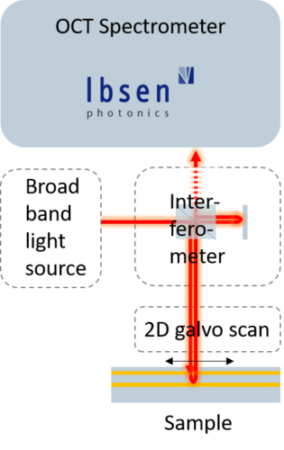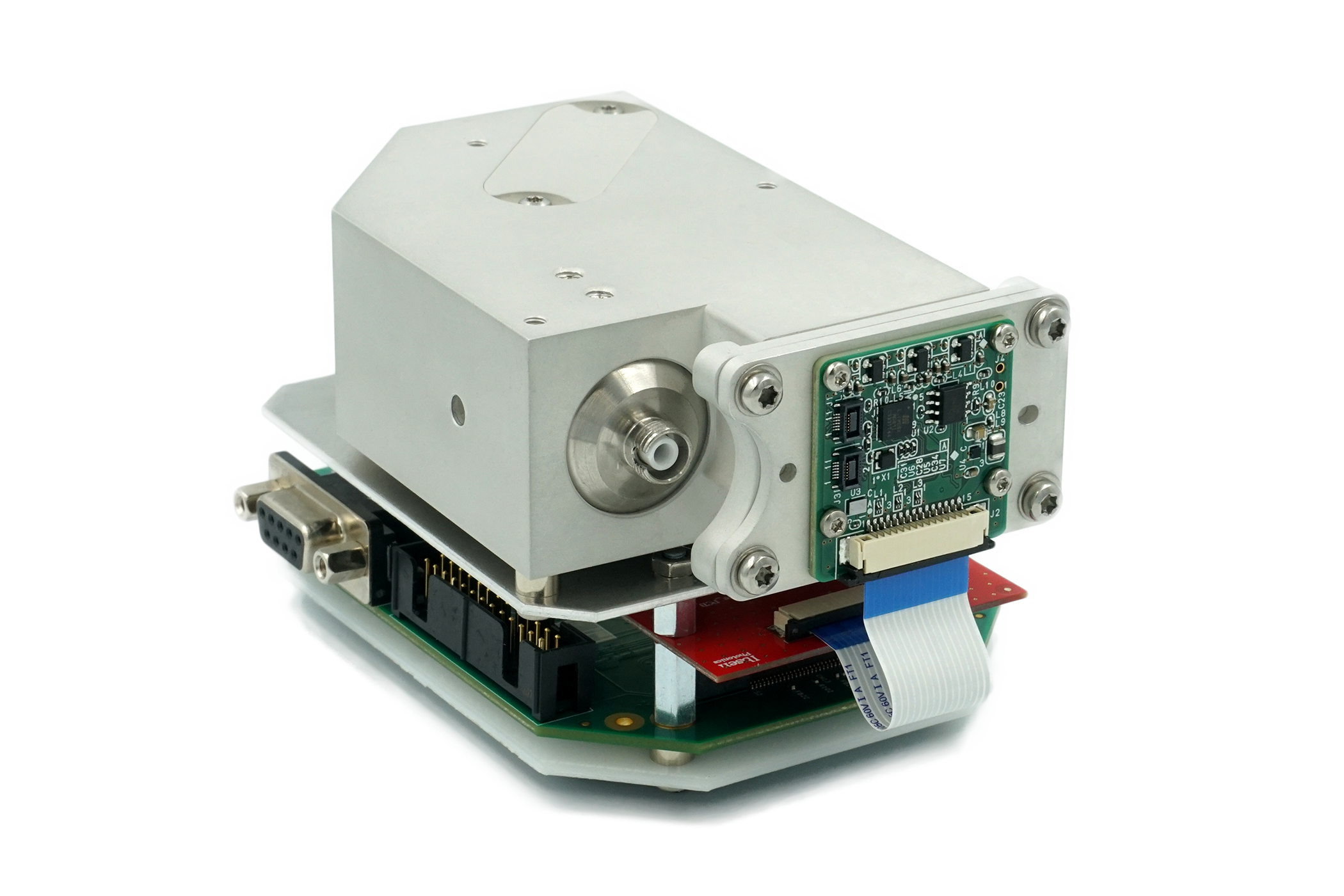OCT spectrometers
for system integration
Choosing the right OCT spectrometer for your application
Instruments for Spectral Domain Optical Coherence Tomography (SD-OCT) consist of a broadband light source, a 2D galvo scanner, an interferometer, and an OCT spectrometer. Depending on your application, there are many things to consider when choosing the right OCT spectrometer.
While ophthalmology retinal scanning is a major application for SD-OCT, there are many other uses that require different wavelengths and optical bandwidths. In general, SD-OCT systems must resolve interferometric fringe patterns in a large number of scan points on the sample with as low roll-off of the depth measurements as possible.
To support this, our OCT spectrometers offer the market’s highest sensitivity and best diffraction-limited resolution, with Modulation Transfer Functions (MTF) optimized to make optimal use of the integrated high-speed line-scan camera. This results in OCT spectrometers offering industry-leading roll-off in compact form factors, for integration into high-performance systems at a competitive cost.

OCT spectrometer sensitivity and roll-off
The high sensitivity of our OCT spectrometers is obtained through in-house manufactured transmission gratings with the highest diffraction efficiency on the market, often >95 % for the entire OCT bandwidth.
We have produced OCT spectrometers covering bandwidths from 60 to 300 nm with detectors of 1024, 2048, or 4096 pixels. Our focus is on performance when building fully customized spectrometers or adapting existing solutions to meet your needs. Our spectrometers offer best-in-class roll-off and sensitivity, enabling record high-quality OCT images.
See our selection of standard OEM spectrometers with MIPI, USB, or CameraLink data interfaces and line rates ranging from 34 kHz to 250 kHz below.

Our OCT spectrometers
| Parameter | Unit | EAGLE OCT-S | EAGLE OCT-S 140 | EAGLE C-OCT-S |
|---|---|---|---|---|
| Wavelength range | nm | 800 - 890 | 780 - 920 | 810 - 870 |
| Resolution | nm | 0.05 | 0.09 | 0.06 |
| Number of pixels | 2048 | 2048 | 1024 | |
| Pixel size | μm x μm | 10 x 200 | 10 x 200 | 7 x 200 |
| Frame rate options | kHz | 20, 80, 130, 250 | 20, 80, 130, 250 | 34 |
| Electrical interface options | CameraLink and USB31) | CameraLink and USB31) | MIPI D-PHY/CSI-2 interface2) | |
| Maximum measurement depth (air/water) | mm | 4.0 / 3.0 | 2.6 / 2.0 | 3.0 / 2.3 |
| Axial resolution (air/water) | μm | 4.1 / 3.1 3) | 2.7 / 2.13) | 6.1 / 4.6 3) |
| Dimensions | mm x mm x mm | 113 x 228 x 60 | 143 x 80 x 60 | 61 x 110 x 33 |
1) 250 kHz option only available with CameraLink
2) USB3 available with Developer’s Kit
3) Assuming flattop SLED profile
Ibsen as your OCT spectrometer manufacturer
At Ibsen, we understand that volume manufacturing of application-specific OCT spectrometers is a completely different task than building a single scientific instrument. We are an ISO 9001 and 13485 certified manufacturer with decades of experience in volume manufacturing of OEM spectrometers.
Our emphasis is on the high and consistent quality of our products, ensured through our proven, robust designs and 100% outgoing inspection. Especially for OCT spectrometers, our low unit-to-unit variation can help you achieve a lean manufacturing process and deliver products with a consistently high quality to your customers.
Our spectrometer designs have undergone environmental qualification to ensure proper operation within specified thermal, humidity, vibrational, and drop test conditions.
We have established long-term relationships with a range of qualified sub-suppliers, ensuring you a stable supply chain. Furthermore, we offer our OEM customers flexible supply options, typically based on frame order contracts or Kanban agreements.
All in all, Ibsen Photonics is a well-established spectrometer supplier that enables you to focus on your core business.
Advantages working with Ibsen:
OCT spectrometer FAQ
More resources
Want to know more?
For further information see below.



